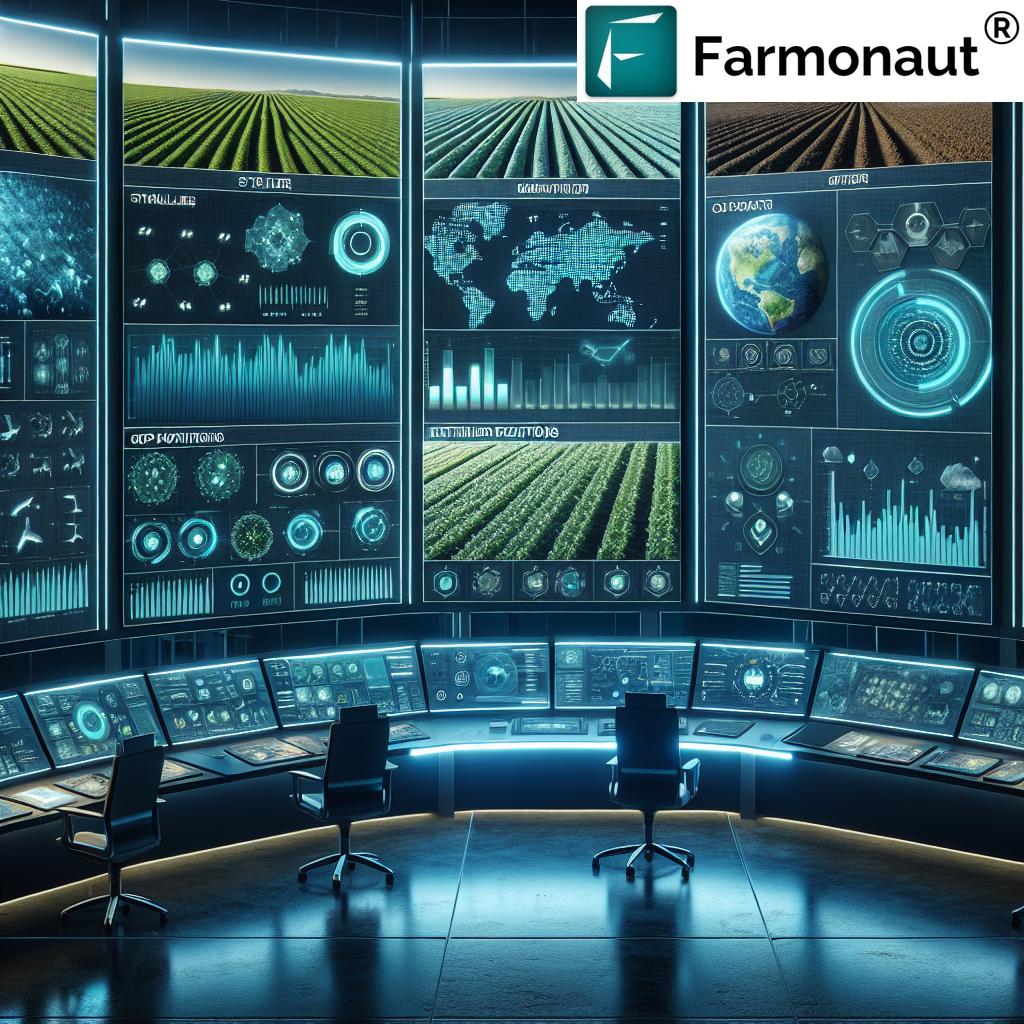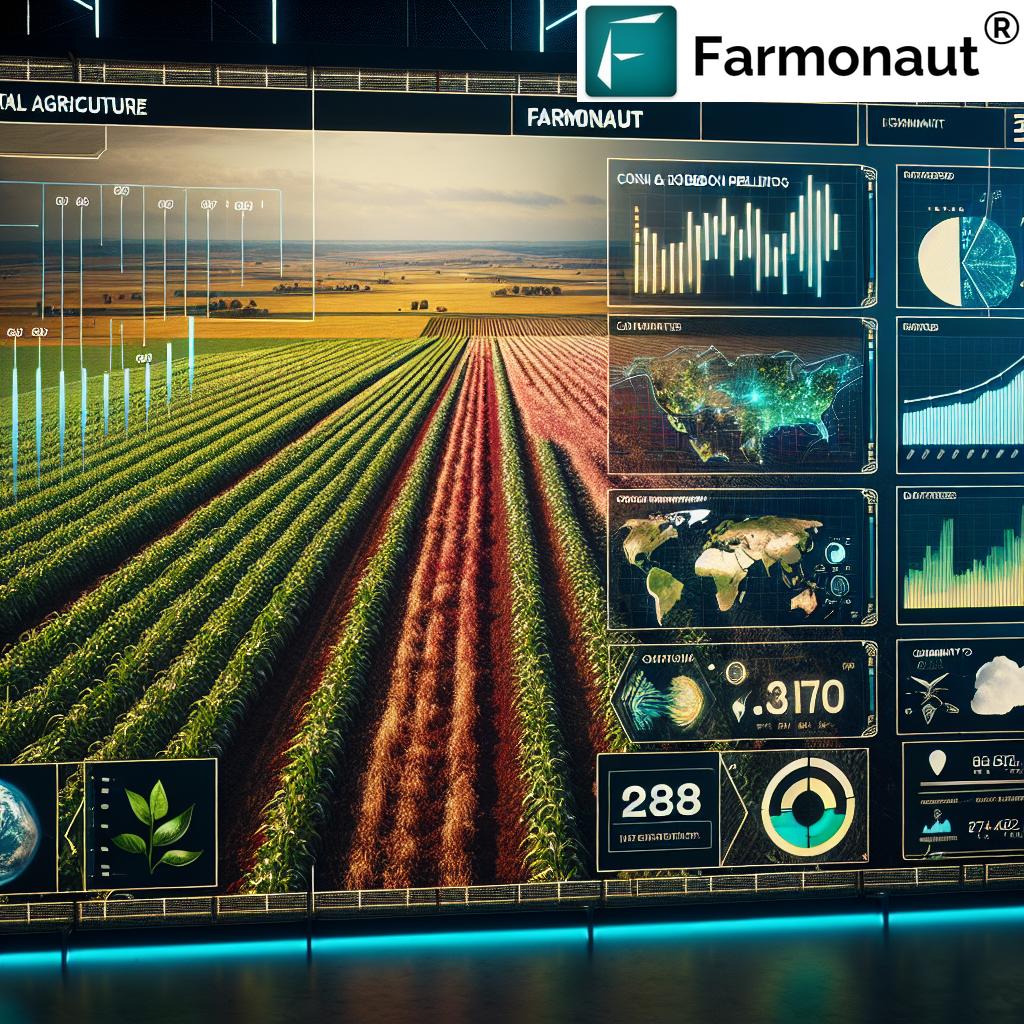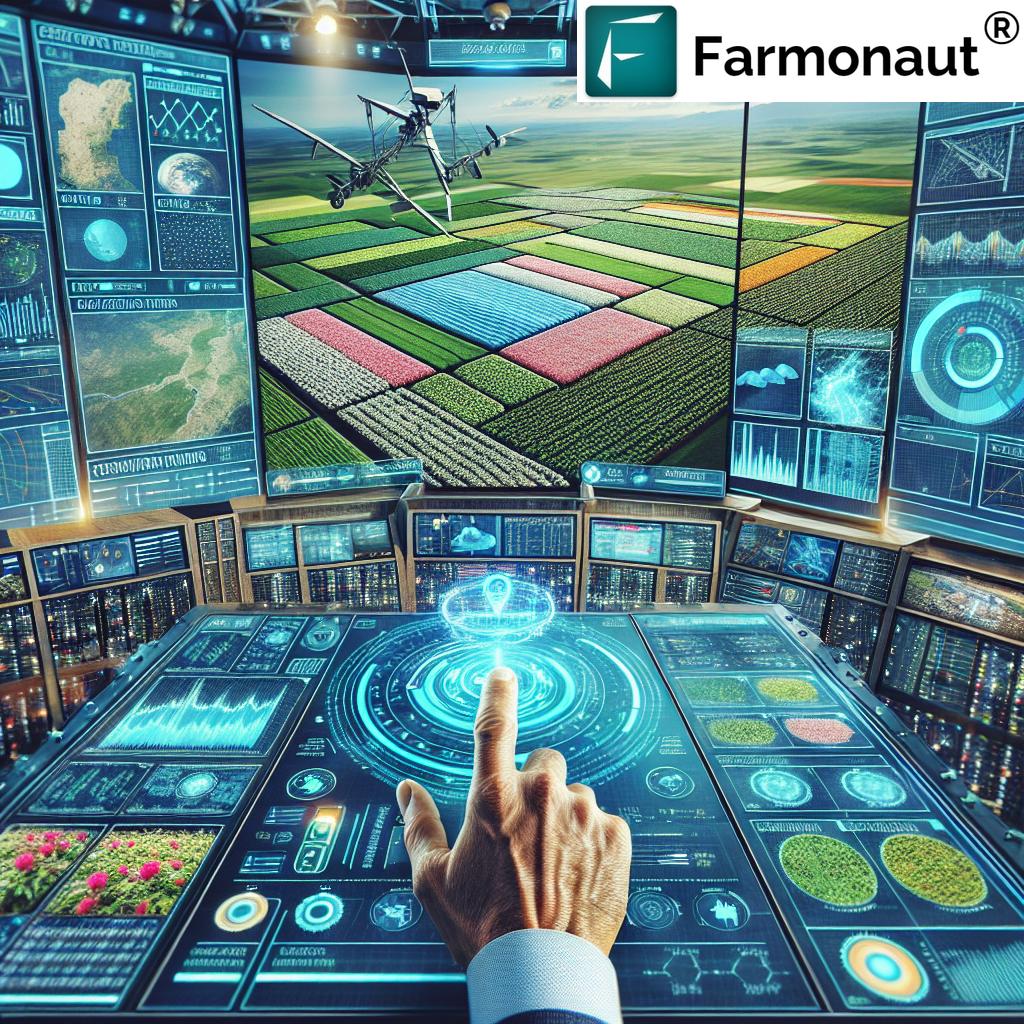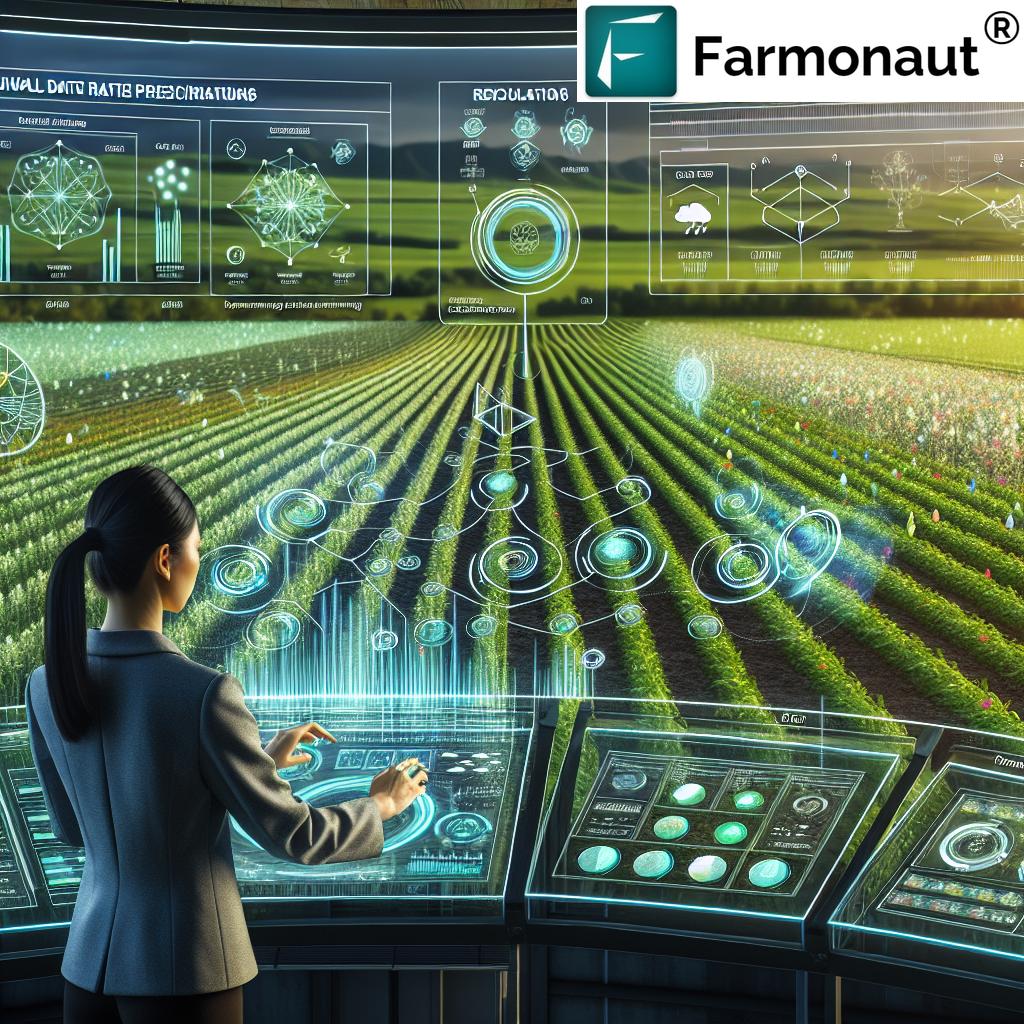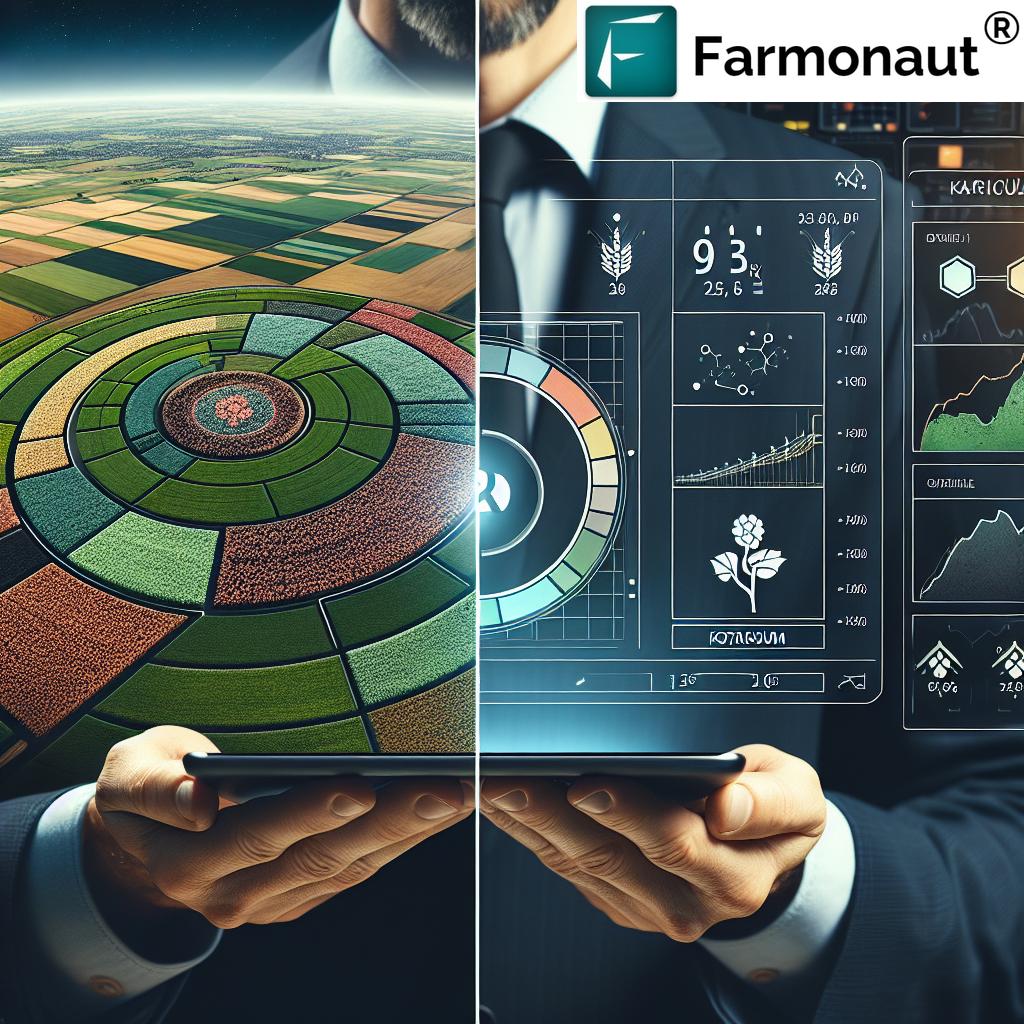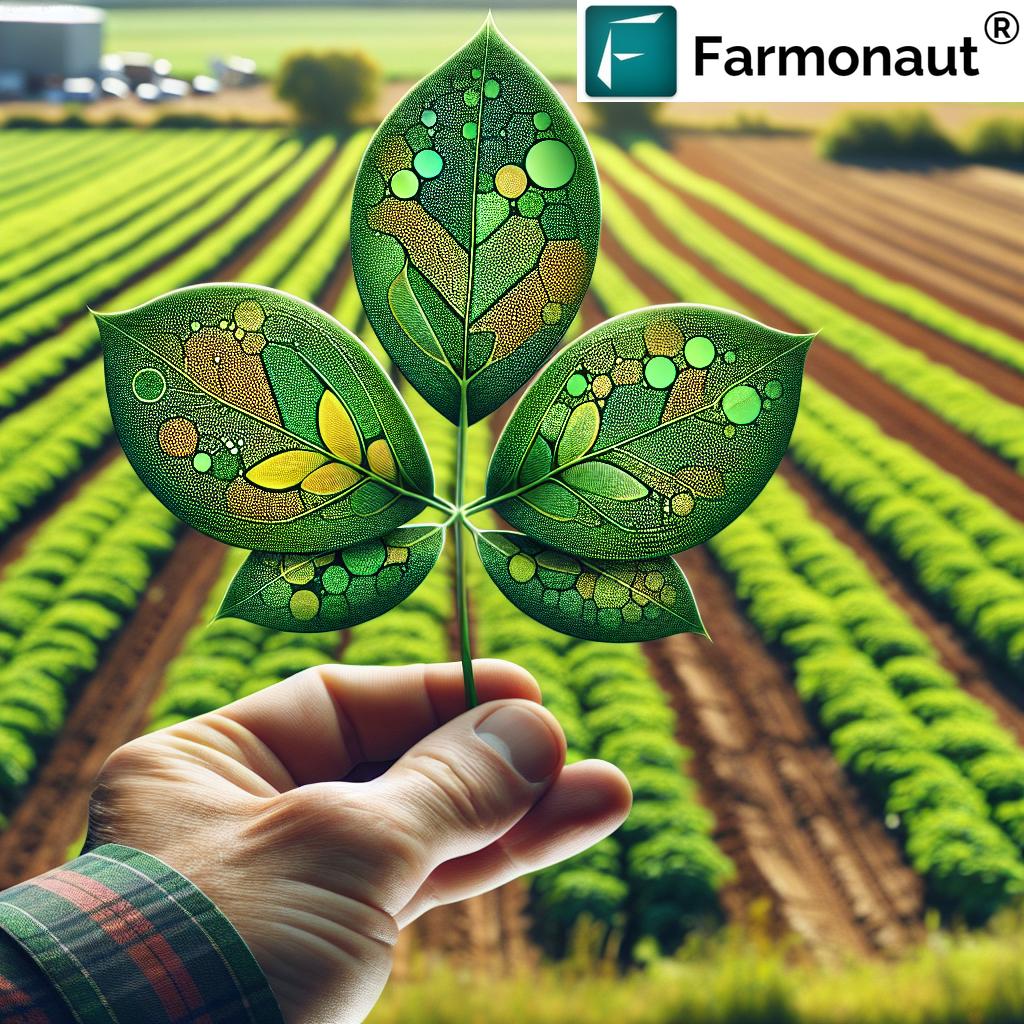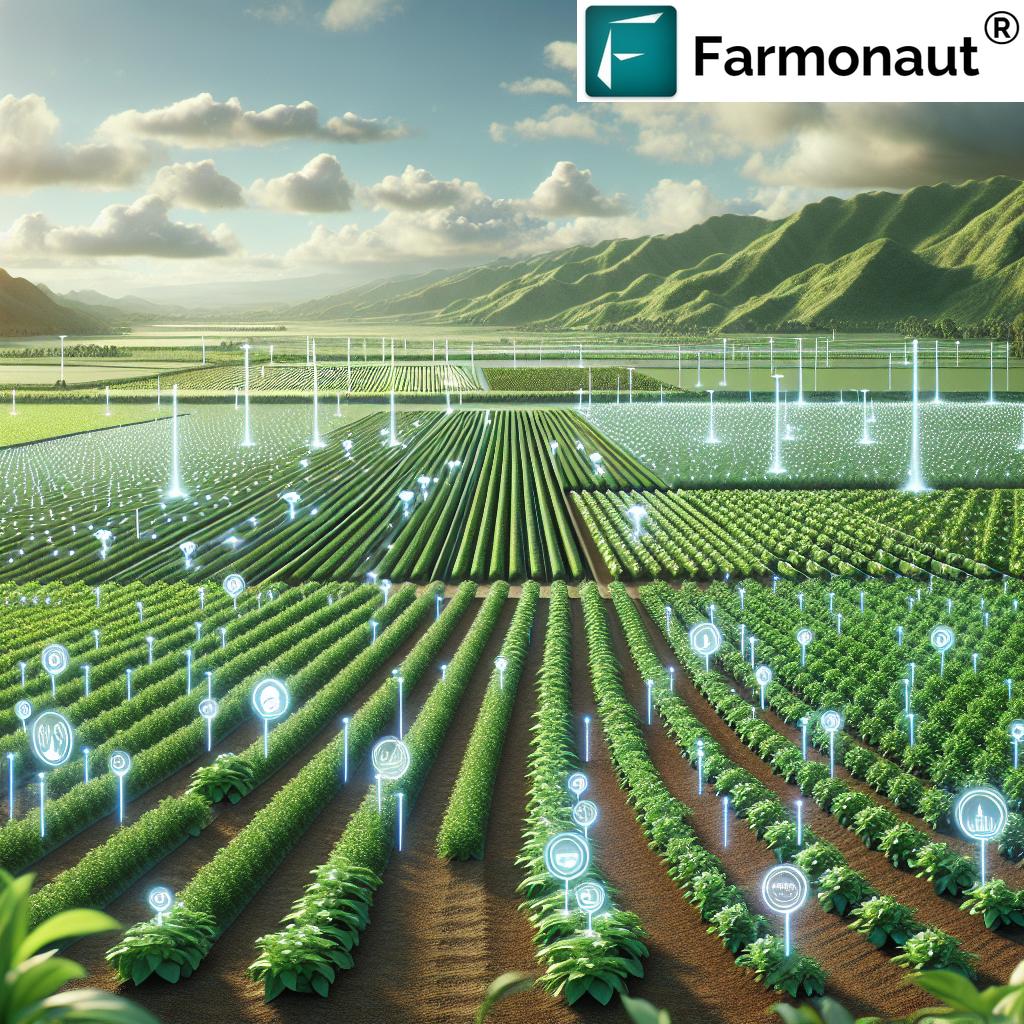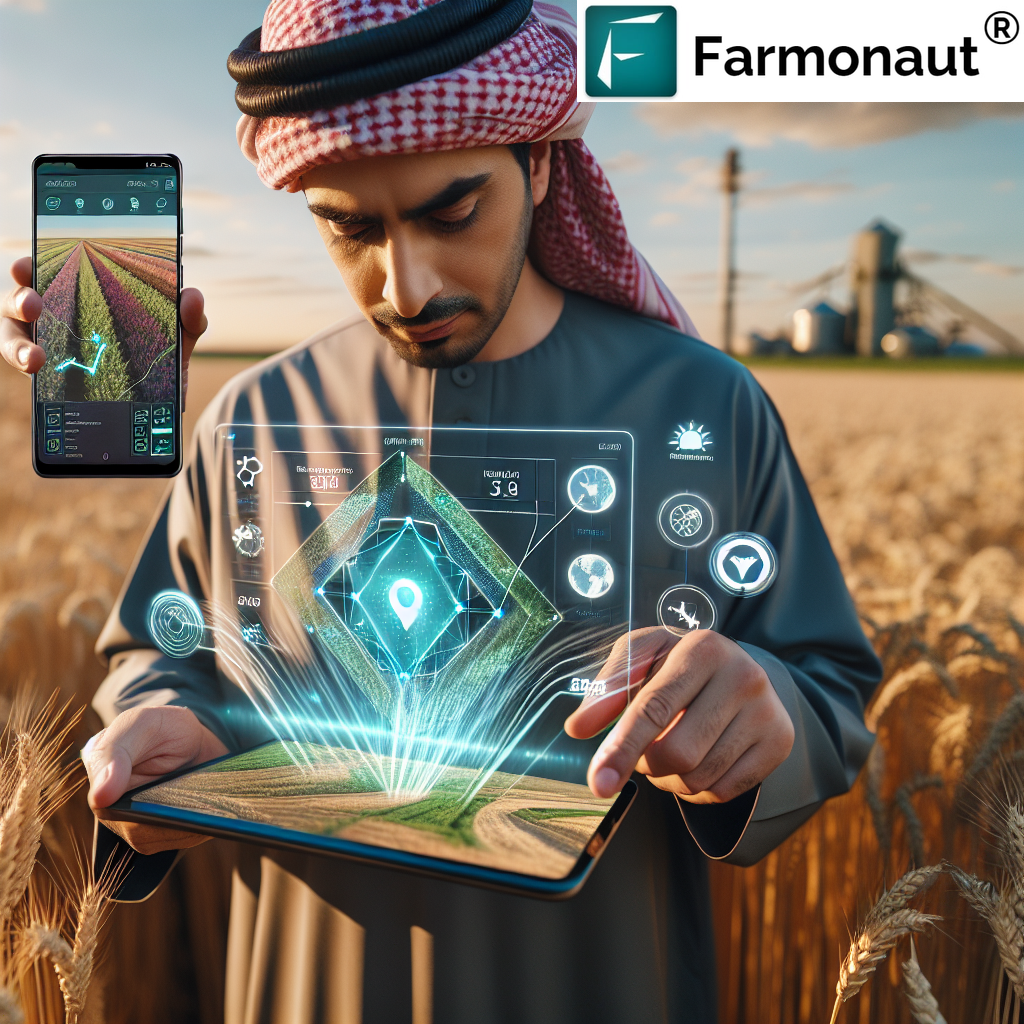
Revolutionizing Agriculture: From APIs to Drones – Innovative Farm Technologies for Modern Crop Management
In the ever-evolving landscape of agriculture, we at Farmonaut are at the forefront of integrating cutting-edge technologies to transform farming practices. From APIs farms to advanced drone technologies, we’re pioneering solutions that are reshaping the way crops are managed and monitored. In this comprehensive guide, we’ll explore the innovative tools and techniques that are revolutionizing farms of all types, including broccoli farms, cotton farms, and even palm oil farms.
The Rise of Smart Farming Technologies
The agricultural sector is undergoing a significant transformation, driven by the adoption of smart farming technologies. These innovations are not just improving productivity but also promoting sustainability and efficiency across various farm types.
APIs in Agriculture: Connecting Farms to the Digital World
Application Programming Interfaces (APIs) have become a cornerstone in modern agriculture. At Farmonaut, we’ve developed robust agricultural APIs that allow seamless integration of farm data with various digital platforms. This technology is particularly beneficial for what we call APIs farms – farms that leverage API technology to streamline operations and enhance decision-making processes.
- Real-time data exchange between farm equipment and management systems
- Integration with weather APIs for precise forecasting
- Automated reporting and analytics for crop health and yield predictions
Our Farmonaut Satellite Weather API is a prime example of how we’re making this technology accessible to farmers and developers alike.
Drone Technology: A Bird’s Eye View of Farm Health
The advent of farm land scanning drones has revolutionized the way we monitor and manage crops. These aerial devices provide high-resolution imagery and data that were previously unattainable or extremely costly to acquire.
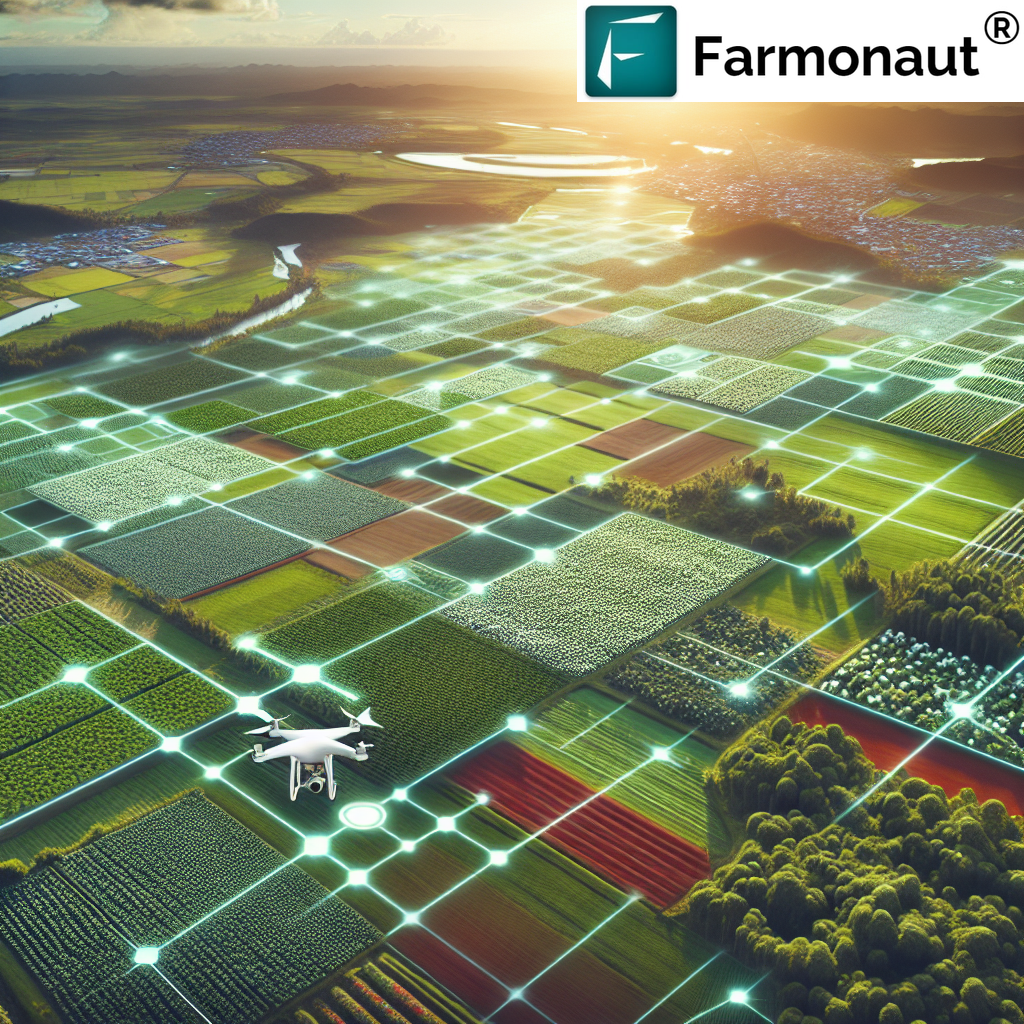
Key benefits of using drones in agriculture include:
- Precise crop mapping and field analysis
- Early detection of pest infestations and diseases
- Optimized irrigation planning through thermal imaging
- Accurate yield estimations
While drones offer significant advantages, it’s important to note that satellite-based monitoring systems, like those offered by Farmonaut, provide complementary benefits, especially for large-scale operations.
Comparison: Farmonaut Satellite System vs. Drone and IoT-based Farm Monitoring
| Feature | Farmonaut Satellite System | Drone-based Monitoring | IoT-based Monitoring |
|---|---|---|---|
| Coverage Area | Large (Entire farms at once) | Limited (Dependent on flight time) | Limited (Sensor placement) |
| Frequency of Data Updates | Regular (As per satellite passes) | On-demand (Manual flights) | Continuous (Real-time) |
| Initial Setup Cost | Low | High | Medium to High |
| Maintenance | Minimal | Regular (Equipment upkeep) | Regular (Sensor maintenance) |
| Weather Dependency | Low (Can penetrate clouds) | High (Clear weather needed) | Low |
| Data Analysis | Advanced AI-driven insights | Requires specialized software | Depends on sensor capabilities |
Innovation Farms: Testbeds for Agricultural Advancement
At Farmonaut, we’re strong advocates for innovation farms – dedicated spaces where new agricultural technologies and practices are tested and refined. These farms serve as living laboratories, allowing us to push the boundaries of what’s possible in modern agriculture.
Key Focus Areas in Innovation Farms:
- Precision agriculture techniques
- Sustainable farming practices
- Integration of AI and machine learning in farm management
- Development of climate-resilient crop varieties
Our collaboration with innovation farms helps us refine our technologies, ensuring they meet the real-world needs of farmers across different crop types and climates.
Specialized Farm Management: From Broccoli to Cotton
Different crops require specialized management approaches. Let’s explore how modern technologies are being applied to various farm types:
Broccoli Farms: Precision in Vegetable Cultivation
Broccoli farms benefit significantly from precision agriculture technologies. Our satellite-based monitoring system helps broccoli farmers:
- Optimize planting density for maximum yield
- Monitor crop health to ensure consistent head formation
- Plan harvests based on real-time growth data
Cotton Farms: Enhancing Fiber Quality and Yield
For cotton farms, technology plays a crucial role in improving both yield and quality. Our solutions offer:
- Early detection of pest infestations, crucial for cotton crops
- Precise irrigation management to optimize water use
- Yield prediction models to aid in harvest planning
Palm Oil Farms: Sustainable Management of Plantations
While not directly related to our core services, we recognize the importance of technology in managing palm oil farms sustainably. Advanced monitoring systems can help in:
- Tracking plantation health over large areas
- Monitoring environmental impact and promoting sustainable practices
- Optimizing harvesting schedules for maximum oil yield
Foundation Wheat Farm Size: Optimizing Scale for Efficiency
The concept of foundation wheat farm size is crucial in modern agriculture. It refers to the optimal farm size that balances efficiency, productivity, and sustainability. Our technology helps farmers determine and manage the ideal farm size by:
- Analyzing land use efficiency through satellite imagery
- Providing data-driven insights on productivity per acre
- Offering scalable solutions that grow with the farm
Live Farm Tracking Devices: Real-Time Monitoring for Informed Decisions
Live farm tracking devices are revolutionizing how farmers monitor their operations. These IoT-enabled devices, when integrated with our satellite data, provide a comprehensive view of farm health and operations.
Benefits of Live Tracking:
- Real-time monitoring of crop conditions
- Immediate alerts for potential issues (e.g., pest infestations, irrigation failures)
- Enhanced decision-making through up-to-the-minute data
- Improved resource allocation and management
Our platform at Farmonaut integrates seamlessly with various IoT devices, providing a unified dashboard for all your farm monitoring needs.
Open-Source Technology for Farm to Home: Bridging the Gap
The concept of open-source technology for farm to home is gaining traction, aiming to create a more transparent and efficient food supply chain. At Farmonaut, we support this movement by:
- Providing open APIs for developers to build farm-to-consumer applications
- Supporting blockchain-based traceability solutions
- Encouraging community-driven innovations in agricultural technology
This open approach not only fosters innovation but also helps in building trust between producers and consumers.
How to Add My Farm in Google Map: Increasing Visibility
For many farmers, digital presence is becoming increasingly important. Adding your farm to Google Maps can increase visibility and help connect with potential customers or partners. Here’s a quick guide:
- Go to Google Maps and sign in to your Google account
- Search for your farm’s location
- Click ‘Add a missing place’ and fill in your farm’s details
- Submit for review
While this process is separate from our services at Farmonaut, we encourage farmers to enhance their digital presence as it complements the technological advancements in farm management.
The Future of Farming with Farmonaut
As we look to the future, Farmonaut continues to be at the forefront of agricultural innovation. Our commitment to making precision agriculture accessible and affordable remains unwavering. We invite farmers, agronomists, and agricultural enthusiasts to join us in this journey of transforming farming through technology.
Experience the power of satellite-based farm management by trying our services:
Subscribe to Farmonaut Services
Frequently Asked Questions (FAQ)
Q: What makes Farmonaut’s satellite monitoring better than drone-based systems?
A: While drones offer high-resolution imagery, our satellite-based system provides broader coverage, more frequent updates, and is less affected by weather conditions. It’s also more cost-effective for large-scale monitoring.
Q: Can Farmonaut’s technology be used for all types of farms?
A: Yes, our technology is versatile and can be applied to various farm types, from small vegetable farms to large-scale grain operations.
Q: How often is satellite data updated in the Farmonaut system?
A: The frequency of updates depends on the subscription plan, but we typically offer updates every 3-5 days for most regions.
Q: Is Farmonaut’s technology suitable for organic farming?
A: Absolutely. Our technology helps organic farmers monitor crop health and manage resources efficiently without relying on synthetic inputs.
Q: How does Farmonaut ensure data security and privacy?
A: We employ robust encryption and secure data storage practices. Farm data is kept confidential and is only accessible to authorized users.
In conclusion, the integration of advanced technologies like APIs, drones, and satellite monitoring is reshaping the agricultural landscape. At Farmonaut, we’re proud to be at the forefront of this revolution, providing farmers with the tools they need to increase productivity, sustainability, and profitability. As we continue to innovate and expand our services, we remain committed to our mission of making precision agriculture accessible to farmers worldwide.



